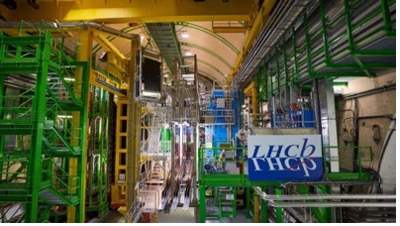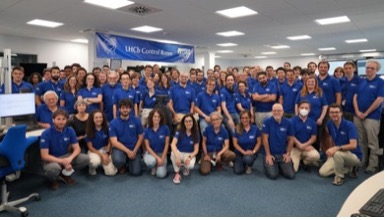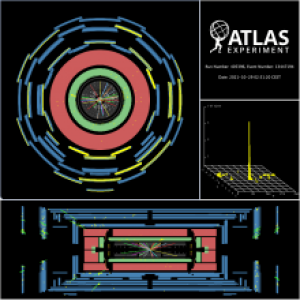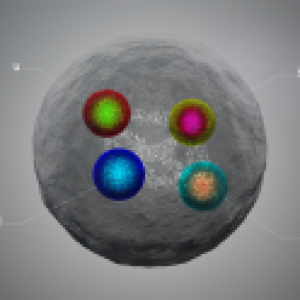LHCb

LHCb (Large Hadron Collider beauty experiment) is one of the four main experiments at the LHC. This detector specializes in heavy flavor physics, crucial for the search for New Physics beyond the Standard Model.
LHCb is a one-arm spectrometer optimized for detecting hadrons containing b quarks. The detector weighs 5600 tonnes, is 21 meters long, 10 meters high, and 13 meters wide, located 100 meters underground. The LHCb collaboration comprises over 1,565 scientists, engineers, and technicians from 20 countries (as of March 2022).
Data analysis focuses on beauty mesons (containing a b quark or antiquark) and charm mesons (containing a c quark or antiquark), as well as beauty baryons (containing three quarks including a b quark or antiquark), bosons, or the search for exotic particles.
The LAPP team joined the LHCb collaboration in 2001 and has recognized expertise in LHCb calorimetry since the experiment’s inception.


Activities of LAPP
- The team has recognized expertise in calorimetry since the start of the experiment.
- Leading role in the development and commissioning of the innovative 40 MHz readout acquisition system for LHCb Detector Upgrade I.
- Significant contribution to the development of software for reconstructing calorimetric objects in the real-time trigger system.
- Conducted several analyses on Dalitz plot studies of open charm decays as well as radiative decays.
Completed PhD theses and Habilitations
- Camille Normand – Phd’s defense – oct. 13, 2023 – Bₛ → µµγ as a partly reconstructed decay: from Standard-Model prediction and New-Physics sensitivity, to a search at the LHCb experiment.
- Anthony Downes – Phd’s defense – Sep. 28, 2023 – A study of B0(s)→ J/ψη(′) decays with the LHCb experiment
- Meril Reboud – Phd’s defense – nov. 26, 2020 – The discrepancies in b → s semileptonic decays : a complete study from model-building aspects, to the definition of novel observables, to their measurement with the LHCb detector.
Collaboration
The LHCb (Large Hadron Collider beauty) experiment at CERN (European Organization for Nuclear Research) is the result of an international collaboration comprising over 1,565 scientists, engineers, and technicians from 20 countries as of March 2022. This diverse collaboration aims to study the properties of beauty particles (b quarks) to understand the asymmetries observed between matter and antimatter.
France plays a crucial role within the LHCb collaboration. The CNRS (National Center for Scientific Research) and IN2P3 (National Institute of Nuclear and Particle Physics) are the main actors in this involvement. French researchers actively participate in all phases of the project, from detector design to data analysis. Laboratories such as LPNHE and IJCLab make significant contributions to the experiment.
The Laboratoire d’Annecy de Physique des Particules (LAPP) makes a notable contribution to the LHCb experiment. As a major research center, LAPP has expertise in LHCb calorimetry and is involved in fundamental research on b and c quarks. Researchers from LAPP collaborate closely with their international counterparts.
Actualités
- All
- Science

After over two years of upgrades and maintenance works, the first pilot beams on 19 October 2021 mark an important
The LHCb results strengthen hints of a violation of lepton flavour universality. Today the LHCb experiment at CERN announced new

The particle, which has been called X(2900), was detected by analysing all the data LHCb has recorded so far


